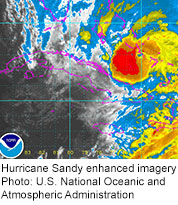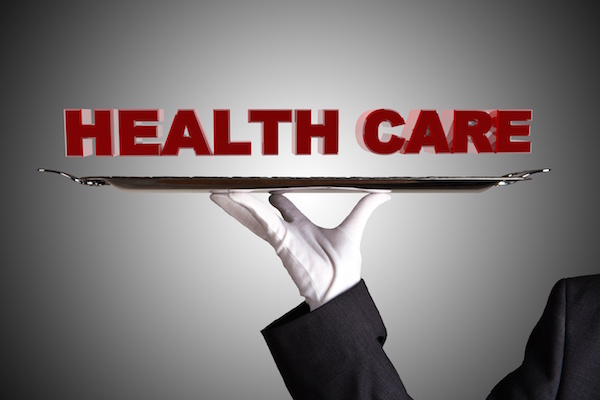
FRIDAY, Oct. 26 (HealthDay News) — Hurricane Sandy continues to bear down on the East Coast of the United States, with the latest forecasts predicting a direct hit to mid-Atlantic or northeastern states early next week.
So, officials are urging residents in those areas to start making emergency storm plans now.
For starters, stock up on prescription medicines, special medical supplies, nonperishable foods — baby formula and pet foods, too — and emergency essentials in case the storm knocks out power in your region or makes travel impossible, experts advise.
“Have a family communications plan as well, in case you get separated during the storm,” said Dr. Robert Glatter, an emergency medicine physician at Lenox Hill Hospital in New York City. Decide where to meet and how you will remain in contact.
“Be prepared to be self-sufficient for one to five days without access to grocery stores,” Glatter added.
David Bernard, chief meteorologist for CBS News’ Miami station, said a confluence of events could potentially turn this storm into one rivaling the 1991 Halloween Nor’easter, which killed 13 people and became the subject of the best-selling book and movie “The Perfect Storm.”
Referring to Sandy, Bernard said, “That’s a lot of warm air, a lot of heat, a lot of energy and of course we’re deep into fall now and we have an unusual strong jet stream dip with winter-like cold air, and you put those two things together, that’s the possibility that is on the weather maps right now, and that could lead to a powerhouse low pressure forming Sunday and Monday.”
In other words, “it’s kind of the worst of everything coming together, winter and what the tropical season has to offer,” Bernard said, according to a CBS News report.
Experts recommended drafting an emergency plan to ensure the safety of your family, your home and your pets.
Tell local authorities about any elderly, disabled or bedridden people who might need emergency assistance, they said.
If you live in an evacuation area, learn the route leading out of danger, the National Weather Service advises.
Remain alert for storm watches and warnings, and if you’re not sure about your home’s vulnerability, ask local authorities about a potential storm surge or rising flood waters. Find out where your community’s emergency shelters are.
If you evacuate, Glatter said it’s important to have a ready-made kit or “go bag,” including extra eyeglasses, sanitized baby bottles and diapers. Diabetic patients should keep extra insulin on hand and a ready supply of snacks in case their sugar levels drop, he said. Store insulin or any liquid antibiotics on ice or cold packs during power failures, he suggested.
Patients who use a CPAP machine for sleep apnea or chronic obstructive pulmonary disease (COPD) may need an alternative power source during the storm. This includes a CPAP battery pack, he said.
To be on the safe side, assemble a one- to two-week supply of prescription medications, Glatter said. And “stay connected — have a list of your doctors with their contact information.”
Keep emergency phone numbers near every phone and in your cellphone “contacts” list.
“Have coins and cash available, too,” Glatter said.
In terms of hurricane supplies, the U.S. Centers for Disease Control and Prevention suggests the following:
- Three to five days’ worth of water, about five gallons per person, in clean containers and three to five days’ worth of nonperishable food.
- Well-stocked first-aid kits for your home and car. The car also needs maps, food, blankets and basic tools such as pliers and tape.
- Charged cellphones, flashlights, a battery-powered radio and extra batteries.
- Extra blankets or sleeping bags.
- Soaps, toothpaste and other personal hygiene necessities. Also, paper towels or baby wipes for personal cleaning if showering or bathing isn’t possible.
- Water-purifying supplies such as chlorine or iodine tablets or unscented household chlorine bleach.
- A fire extinguisher that all in the family know how to use.
But no matter how hard the winds howl, “Don’t panic — try to take things one step at a time,” said Glatter. “Practice slow abdominal breathing if you feel overwhelmed during the storm.”
More information
The U.S. Centers for Disease Control and Prevention has more about emergency preparedness.

